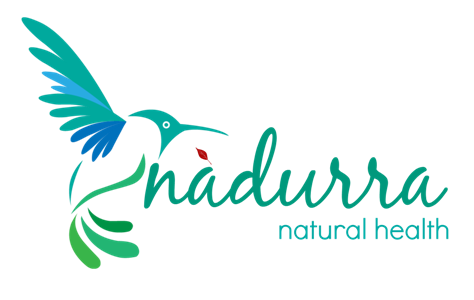Learning (or working out yourself) that you’re lactose intolerant can be distressing. Suddenly you’re confronted with the decision of what to use as a dairy milk replacement. There are so many different kinds of non-dairy milk available now and the choice of lactose intolerant milk can be overwhelming. What milk is best when you are lactose intolerant?

Should you look for an alternative form of animal milk, one of the nut milks or perhaps a grain milk? Or should you simply just use ‘lactose-free’ cows milk? And what exactly is A2 milk? These are all questions to consider.
Lactose intolerance is not the same as a dairy allergy
Lactose intolerant people lack the enzyme lactase which is needed to break down lactose, the sugar in milk, so it can be absorbed. When lactase is lacking or deficient your body cannot break down the lactose. It then passes through your gut in an undigested state. When it meets the bacteria in the lower intestinal tract gas is produced and you experience all the painful symptoms.
LACTOSE FREE MILK
For many lactose intolerant people the simplest option may be to switch to lactose-free cows milk. In this the lactose, or milk sugar, has been changed so the gut can process it.
Lactase, the enzyme lactose intolerant peple lack, is added to this milk to break down the lactose into smaller molecules. You are then able to absorb it without the symptoms associated with digesting normal milk.
Lactose-free milk tastes much sweeter than normal dairy milk because the sugar is already broken down.
However those reducing animal fat in their diet may prefer plant-based alternatives.
SOY MILK
Soy milk comes from soy beans and water. It’s low in saturated fat but rich in a range of essential nutrients including protein and potassium. It’s also high in antioxidants.
Because many soy crops are genetically modified it is vital you only drink ones labeled as GMO free.
Select ONLY those brands made from whole soybeans. They will be labelled as such, even if just in the ingredient list.
This is really important
Over 50% of soy milk is made from soy isolates. AVOID IT.
Check your soy milk is unsweetened as many brands add sugar.
Soy milk has quite a creamy consistency. There’s a big difference in the quality and taste of different soy milks so you may need to test a few to find one you like.
There is evidence that soy can improve your blood profile and help prevent strokes and heart disease. The phytoestrogens in soy can help balance hormone levels in postmenopausal women and reduce the risk of prostate cancer in men.
ALMOND MILK
Almond milk is made from ground almonds and water.
Although almonds are a good source of protein, almond milk is low in protein. But it does provide all the antioxidant benefit of almonds. It’s cholesterol free and has been used to lower blood-sugar levels. Some brands are fortified with calcium, vitamin D and vitamin B12. Many brands are sweetened.
Almond milk has a nutty flavour and light, creamy texture. It can be used in everything, from cooking to smoothies or drinking. However, almond milk is not suitable for anyone with a fructose intolerance or nut allergy.
Some commercial almond milks contain very little almonds. The one I use has 10% content. It’s just a case of seeking out a quality brand. Almond milk is quite easy to make for yourself. It contains far more almonds than packaged varieties and can be made using organic almonds and pure water. Plus you know it won’t be loaded up with agave or other sweeteners.
HOW TO MAKE ALMOND MILK
- Simply soak 1 cup of almonds I water for at least 6 hours or overnight to remove phytates and enzyme inhibitors
- Remove from water. For a less gritty flavour and lighter colour milk remove the skins
- Rinse and drain, then blend the almonds with 4 cups of filtered water. For a thicker milk reduce the quantity of water
- Strain through cheesecloth or a nut milk bag, which you can buy or make simply yourself
- You can blend in cinnamon, honey or other flavourings
- It keeps in the fridge for up to a week
You could also make this recipe with macadamia or hazelnuts. Milk made from any nut is always simple to make. You can get creative with your home-made nutmilks by adding ingredients like chia seeds.
If you drink milk rarely or only use it for cooking just make small quantities as you need it.

COCONUT MILK
Coconut milk is a great alternative to cows milk for thickening or creating a creaminess in soups, stews, curries or for baking. It can even be whipped up and makes a great replacement in desserts for normal cream.
It contains a special fat called medium chain triglycerides, which is metabolised differently to other fats. They boost metabolism and give a burst of energy, rather than being stored in the body as fat.
Coconut milk is made from the coconut flesh and is rich and thick. Don’t confuse it with coconut water which is the liquid from the centre of the nut.
Unlike most liquids coconut milk contains lots of fibre because it is made by grating the flesh. One cup contains over 5 grams of fibre, one sixth of your daily requirement.
To make coconut milk simply add young coconut meat to the blender, cover with filtered water and blend. Add more water until you reach the consistency you desire. Any leftover coconut milk from cans can be frozen in ice-cube trays.
If you eat a wholefood diet nut milks are a good choice because they undergo less processing.
RICE MILK
One of the grain milks, rice milk typically contains about 14% rice. It is very low in fat but is much lower in protein than soy milk. In fact it falls low all round on the nutrition scale, although there are calcium enriched versions available.
Rice milk is thinner and milder in flavour than either soy or almond milk and is suitable for anyone with soy or nut allergies or gluten intolerance as well as lactose intolerance.
OAT MILK
Oat milk is another grain milk with a mild, slightly sweet taste, and less rich than the nut milks.
It’s very low in fat but high in vitamins and minerals. In fact it contains more calcium than cow’s milk. It’s also high in Vitamin A. It is very low in fat, about a third of that in cow’s milk, and is cholesterol free. Oat milk is a good option for vegans as it contains good amounts of iron.
Oat milk can provide a great tonic for the nervous system, calming it down.
It is not suitable if you have a gluten intolerance.
A2 MILK
It is the protein component in A2 milk that makes it different to most dairy milk. In this respect it resembles the milk from other animals like goat, sheep, or buffalo.
While A2 may be better for those with an allergy to milk it does not help someone with a lactose intolerance, as the milk sugar is not changed. If A2 milk does improve symptoms then perhaps those symptoms were due to a milk allergy rather than lactose intolerance.
LACTOSE IN FOODS
When you’re lactose intolerant you also need to avoid foods containing lactose. This includes cream, cheese, butter, ice-cream, crème frais, condensed milk, custard, plus the huge number of processed foods that have any form of milk in them. Packaged foods containing milk solids, skimmed milk, milk proteins, biscuits, cakes, bread, luncheon meat, soups, sauces, plus many more all should be avoided.
Goat and sheep milk and cheese do contain lactose but in far lesser quantities than cows milk. You may find you can tolerate small quantities of these cheeses occasionally, and perhaps tolerate a little butter. But many find even this brings on their symptoms.
You may tolerate quality yogurt because the live bacteria in the yogurt partially break down the lactose, making it easier to digest.
As more plant-based milks appear the choices will just become wider. Try out a few different milks and find which you prefer. And remember to mix them up, sometimes soy, nut, oat or rice, for greater variety in your diet.
I use soy milk for cooking some things and nut milks for others as some milks suit one type of food preparation better than others. For drinking it comes down to your own preference.
Which dairy milk alternative is your favourite?

Disclaimer
All information and opinions presented here are for information purposes only. They are not intended as a substitute for professional advice offered during a consultation with your health care provider. Do not use this article to diagnose a health condition. Speak to your doctor if you think your condition may be serious or before discontinuing any prescribed medication. Please consult with your health care provider before following any of the treatment suggested on this site, particularly if you have an ongoing health issue.


